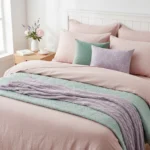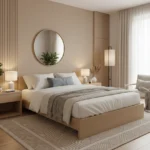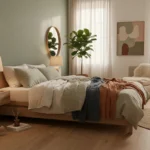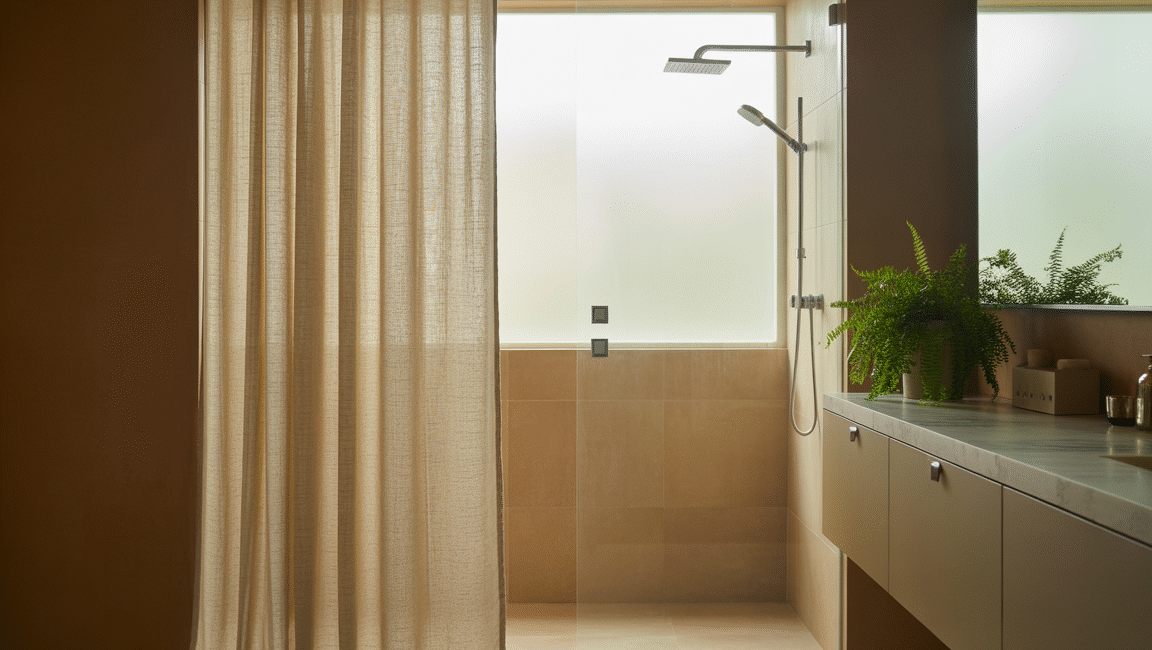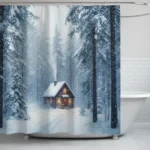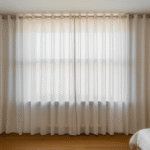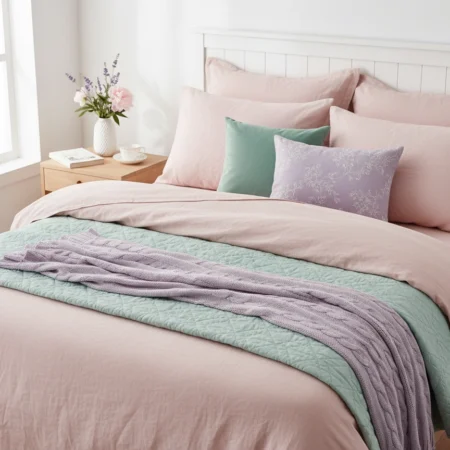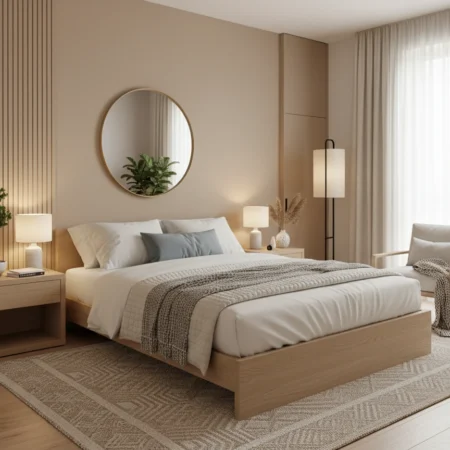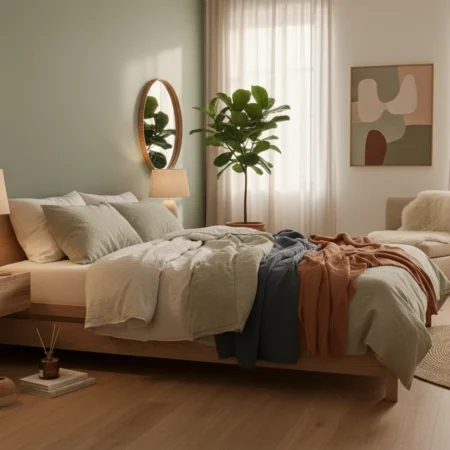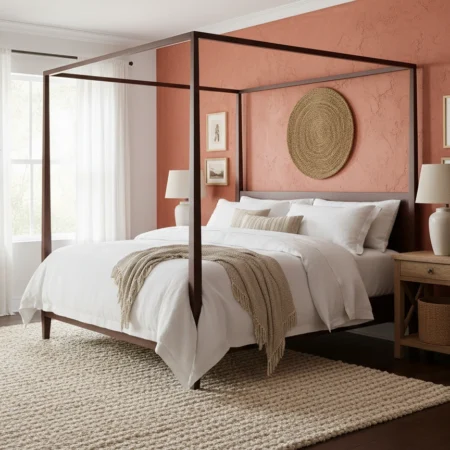You’ve probably noticed something interesting happening in bathroom design lately. Walk into a newly renovated home, and you might see glass shower enclosures paired with curtains—something that would have seemed redundant a few years ago. But here’s the thing: this combination actually solves several problems at once. It gives you the sleek, open feel of glass while adding warmth, flexibility, and yes, sometimes a bit more privacy when you need it.
I started seeing this trend take off when my sister renovated her master bath. She’d installed a beautiful frameless glass enclosure but felt the space looked too cold, too clinical. Adding a linen curtain on a brass rod transformed everything—suddenly the bathroom felt like a spa retreat instead of a hotel. That’s when I realized this wasn’t just about aesthetics. It’s about creating a space that feels both polished and lived-in.
Let’s look at twelve ways to combine glass showers with curtains, each bringing its own character to your bathroom.
1. Frameless Glass with Sheer Linen Curtains
This is the gold standard for modern-meets-cozy. A frameless glass enclosure keeps sightlines open and makes small bathrooms feel larger, while a sheer linen curtain in white or natural beige adds texture without blocking light.
The beauty here is in the layering. The glass does the heavy lifting for water containment, so your curtain doesn’t need to be waterproof. You can choose materials based purely on how they look and feel. Linen wrinkles naturally, and that’s actually part of its charm—it softens all those hard surfaces (tile, glass, chrome) that dominate most bathrooms.
Practical tip: Mount your curtain rod 6-8 inches outside the shower opening. This creates visual width and prevents the curtain from getting soaked every time you shower. Use simple brass or matte black rings that complement your fixtures.
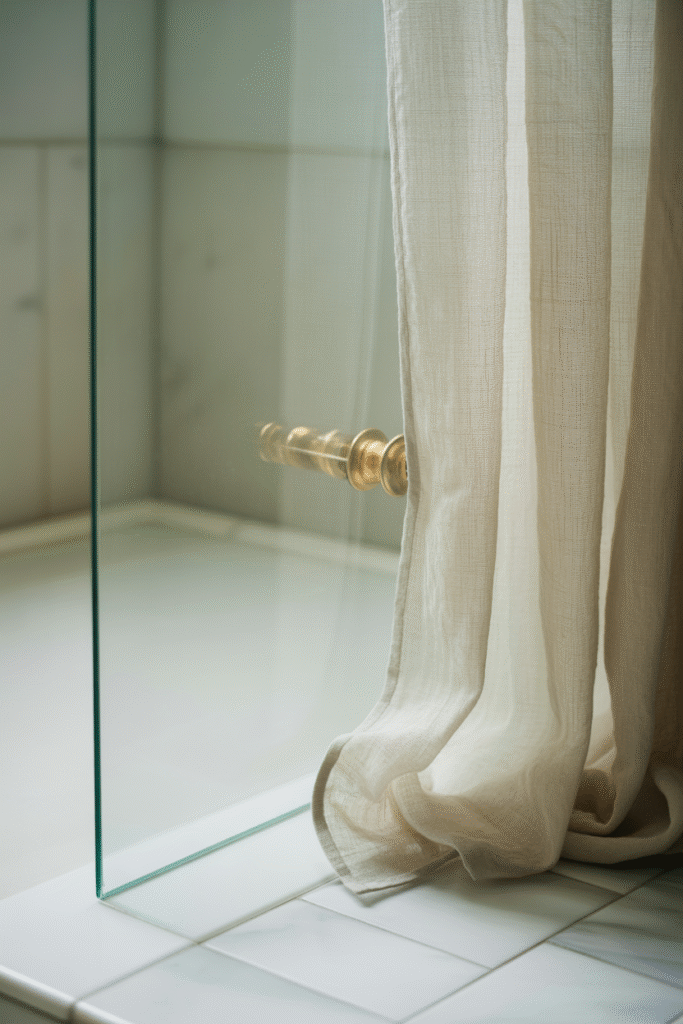
2. Half-Glass Partition with Full Curtain Coverage
Here’s a smart approach for bathrooms where you want options. Install glass on just one or two sides of your shower—typically the side facing the vanity—then use a curtain to close off the rest.
This works particularly well in vintage homes or spaces with architectural quirks. Maybe you have a sloped ceiling, an odd corner, or a window in the shower area. The glass handles the straightforward sections, while the curtain adapts to whatever challenges your space throws at it.
The cozy factor comes from control. Some mornings you want that curtain pulled back for an airy feel. Other times—especially on cold mornings—you want it wrapped around you, holding in the steam and warmth. You get both options.
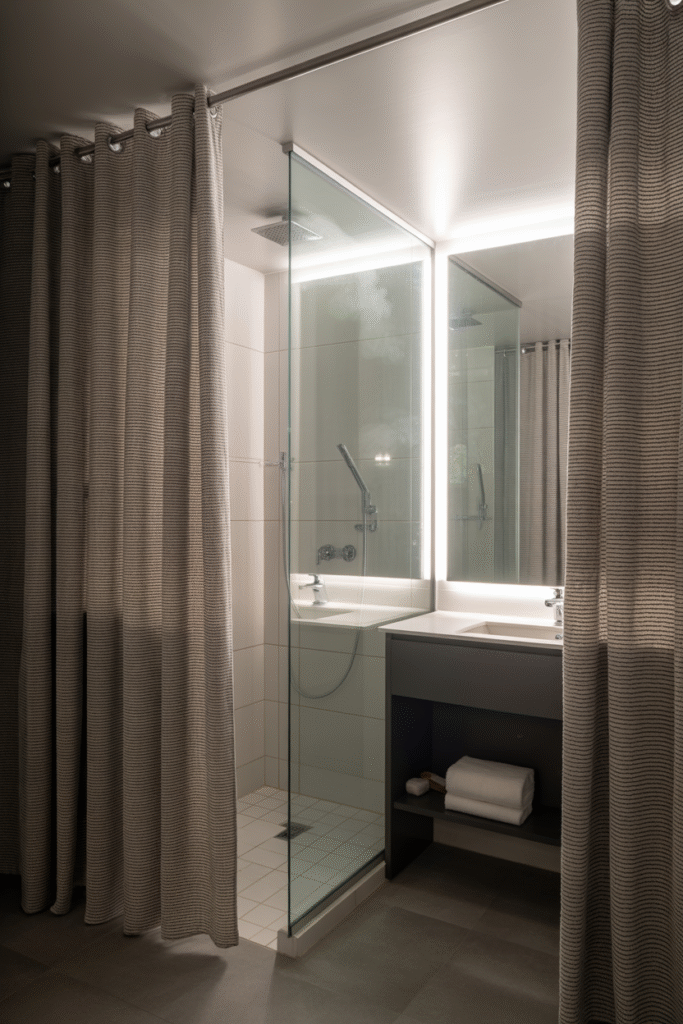
3. Clear Glass with Bold Patterned Curtains
If your bathroom feels too neutral, too safe, this is your moment. Keep the glass completely clear and frameless, then introduce personality through a boldly patterned curtain.
Geometric prints in navy and white create a contemporary feel. Oversized florals bring in a garden-inspired softness. Even a simple striped curtain in unexpected colors (rust and cream, sage and charcoal) can completely change the room’s mood.
The glass acts as your neutral canvas, letting you swap curtains seasonally or whenever you’re ready for a change. It’s like having removable wallpaper for your shower—all the impact, none of the commitment.
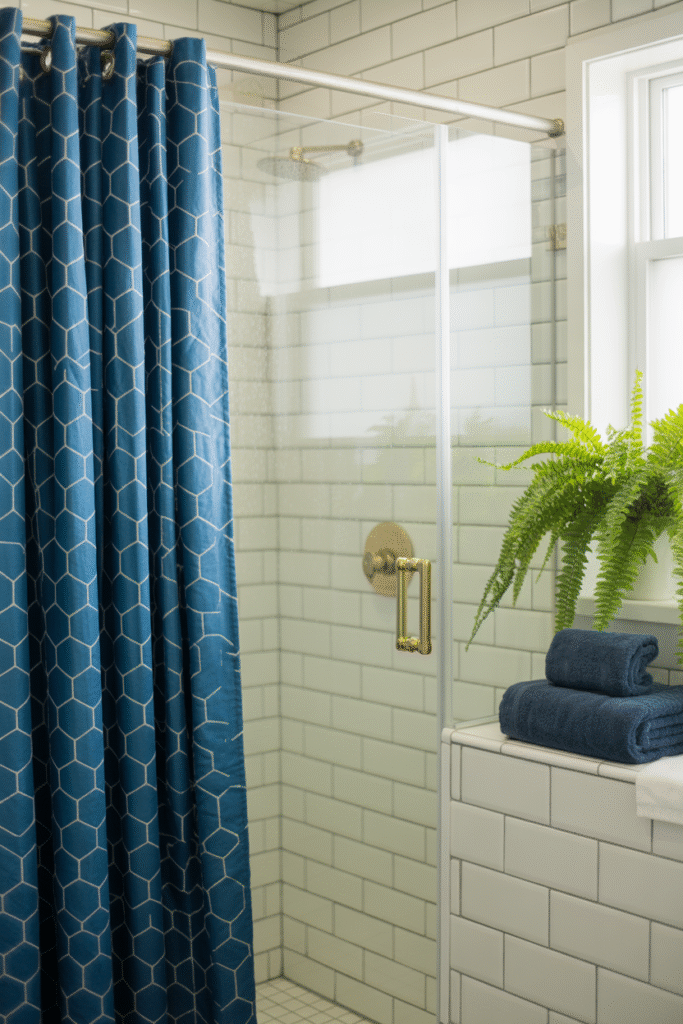
4. Frosted Glass Panels with Matching Textured Curtains
Privacy matters, especially in shared bathrooms. Frosted or textured glass provides constant screening while still allowing light to pass through. Pair it with a curtain in a similar weight and texture—maybe a waffle weave or a subtle jacquard pattern.
This combination feels cohesive rather than busy. The frosted glass and textured curtain speak the same design language, creating a sense of intentional layering rather than random additions.
For maximum coziness, choose warm-toned hardware. Brushed gold or aged bronze picks up warmth from the lighting and makes the whole space feel more intimate.
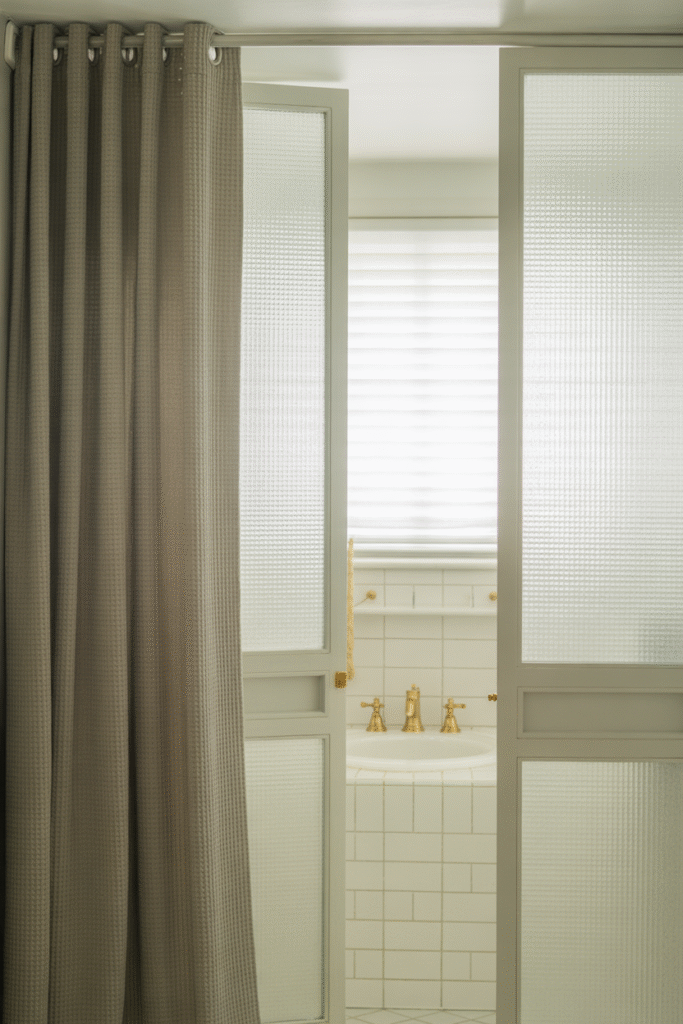
5. Floor-to-Ceiling Glass with Café-Style Curtains
This one surprises people. You’d think floor-to-ceiling glass wouldn’t need curtains at all, but adding café-style curtains at eye level creates an unexpectedly charming effect.
The curtains cover just the middle portion of the glass—typically from about 2-3 feet off the floor to 5-6 feet up. You maintain the modern sweep of glass from floor to ceiling, but you add a layer of vintage-inspired softness that makes the space feel more approachable.
This works beautifully in bathrooms with good natural light. The café curtains can diffuse harsh afternoon sun while keeping views of the ceiling and floor unobstructed.
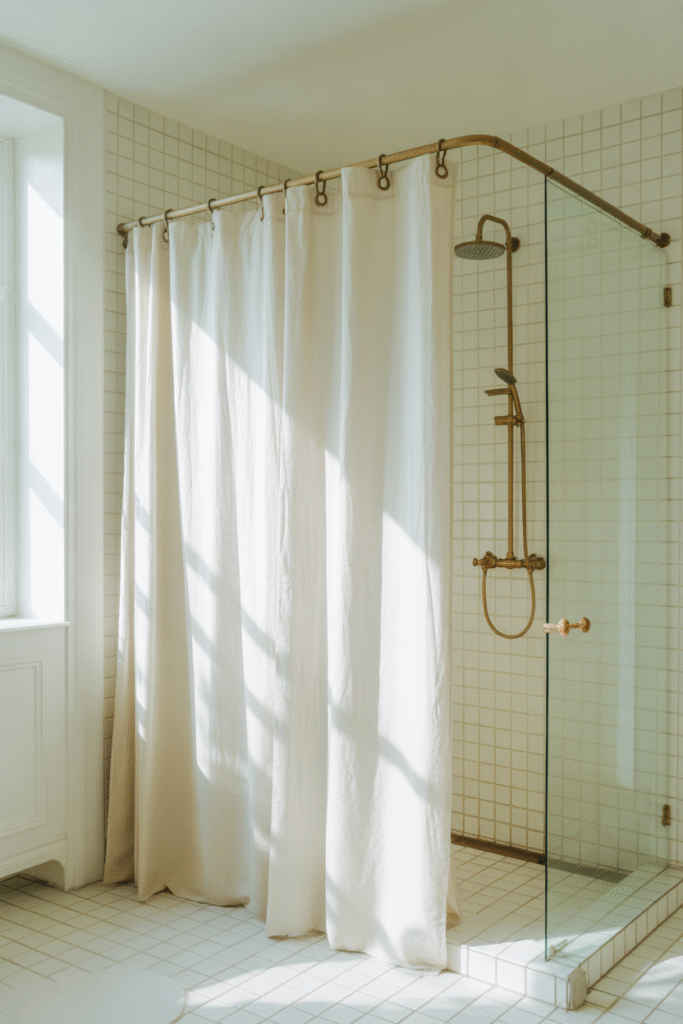
6. Sliding Glass Doors with Side Curtain Panels
Sliding glass shower doors are practical for tight spaces, but they can feel a bit utilitarian. Soften them by installing curtain panels on either side—not across the opening, just flanking it like you would frame a window.
These panels stay stationary most of the time. They’re purely decorative, adding color and fabric to a glass-and-tile environment. But you can draw them closed for full privacy when guests use the bathroom, or to block a window view if your shower includes exterior walls.
Choose floor-length panels in a fabric that complements your towels. The vertical lines they create make ceilings feel higher too.
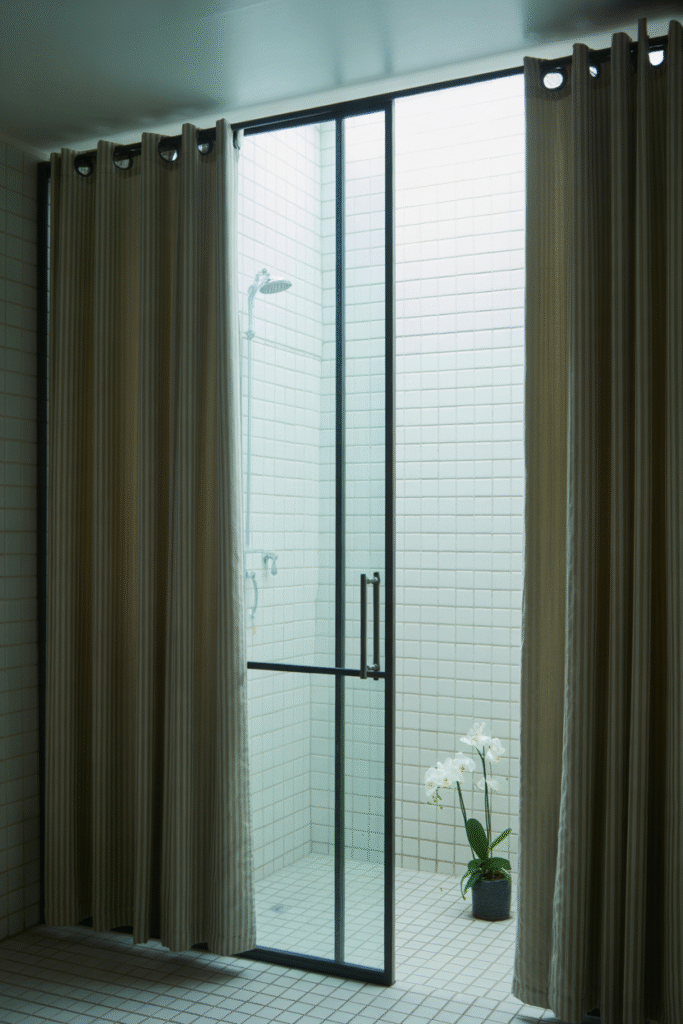
7. Curved Glass with Flowing Curtains
Curved glass enclosures already have a softer, more organic feel than sharp corners. Enhance that by pairing them with curtains that flow and drape naturally.
Look for fabrics with good weight—not stiff canvas, but not tissue-thin either. A mid-weight cotton or cotton-linen blend moves beautifully and maintains its shape without looking too structured.
The curve of the glass and the soft draping of the curtain create a dialogue—both elements emphasizing organic shapes over rigid geometry. This approach works especially well in bathrooms with other curved elements like rounded mirrors or arched doorways.
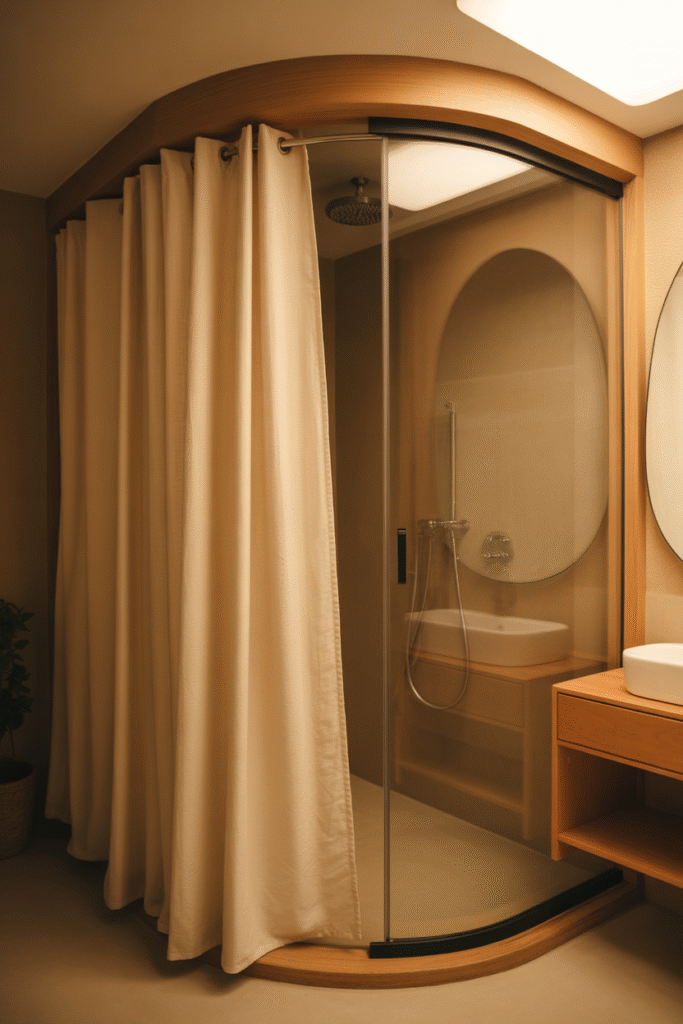
8. Minimal Glass Panel with Layered Double Curtains
Sometimes less glass is more. A single fixed glass panel (often called a “shower screen”) protects your bathroom floor from the initial water spray. Then add two curtain layers: a waterproof liner inside and a decorative curtain outside.
The double-layer approach adds genuine coziness through depth and dimension. The space between the two curtains creates shadow and texture. Choose an outer curtain in a natural fabric like cotton or hemp—materials that develop character over time.
This setup also gives you flexibility. You can pull both curtains fully open for an airy feel, close just the liner for functionality, or draw both for a cocooned, spa-like experience.
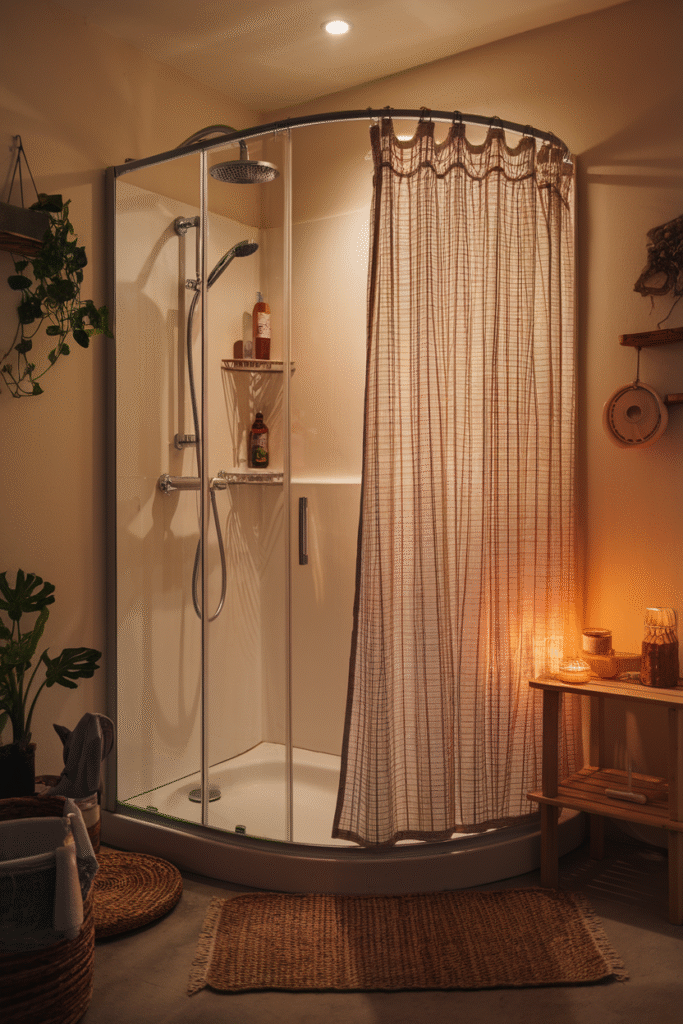
9. Tinted Glass with Complementary Colored Curtains
Tinted glass in gray, bronze, or even subtle blue tones creates instant sophistication. Rather than fighting that color, embrace it with curtains in a complementary shade.
Bronze-tinted glass pairs beautifully with terracotta, rust, or warm taupe curtains. Gray-tinted glass looks stunning with blush pink, soft sage, or deeper charcoal curtains. The color harmony between glass and fabric creates a pulled-together look that feels intentional and designer-level.
This approach works best when you’re committing to a color story for the entire bathroom. The tinted glass and colored curtain become anchor pieces that inform your choices for towels, rugs, and accessories.
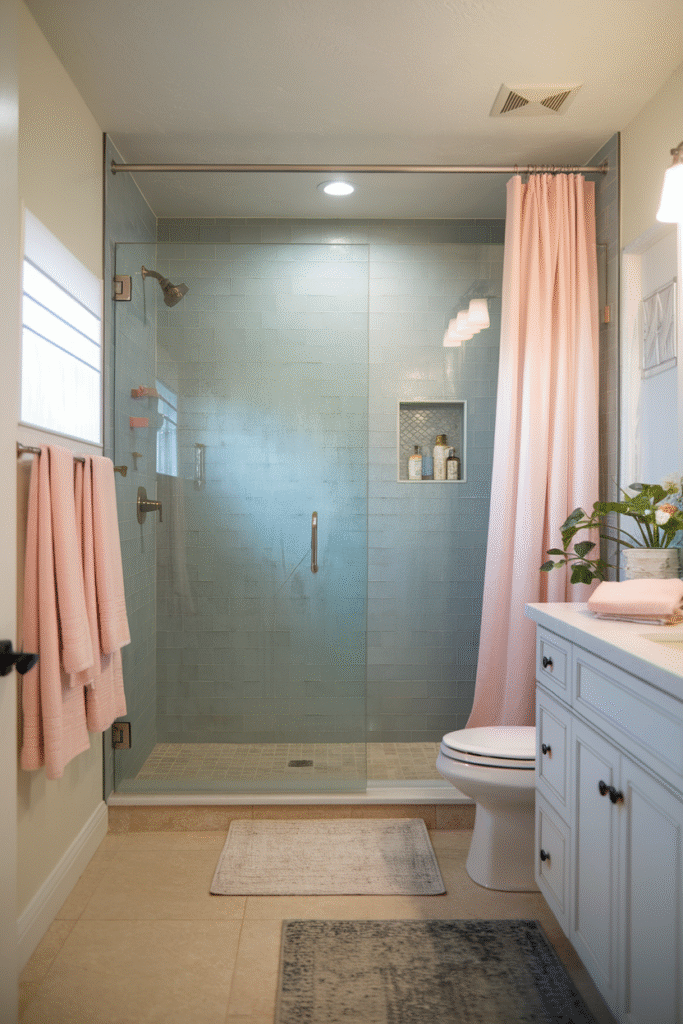
10. Industrial Black-Framed Glass with Canvas Curtains
Black-framed glass enclosures have that modern industrial edge—they’re bold, graphic, and architectural. Balance that strength with the organic simplicity of a heavy canvas curtain in natural, off-white, or even charcoal.
Canvas brings weight and substance. It hangs beautifully, doesn’t wrinkle like linen, and introduces a utilitarian texture that complements industrial design without competing with it.
Add black or iron curtain rings, and keep the rod simple. The goal is cohesion—let the black frames and the canvas curtain feel like they belong to the same design family.
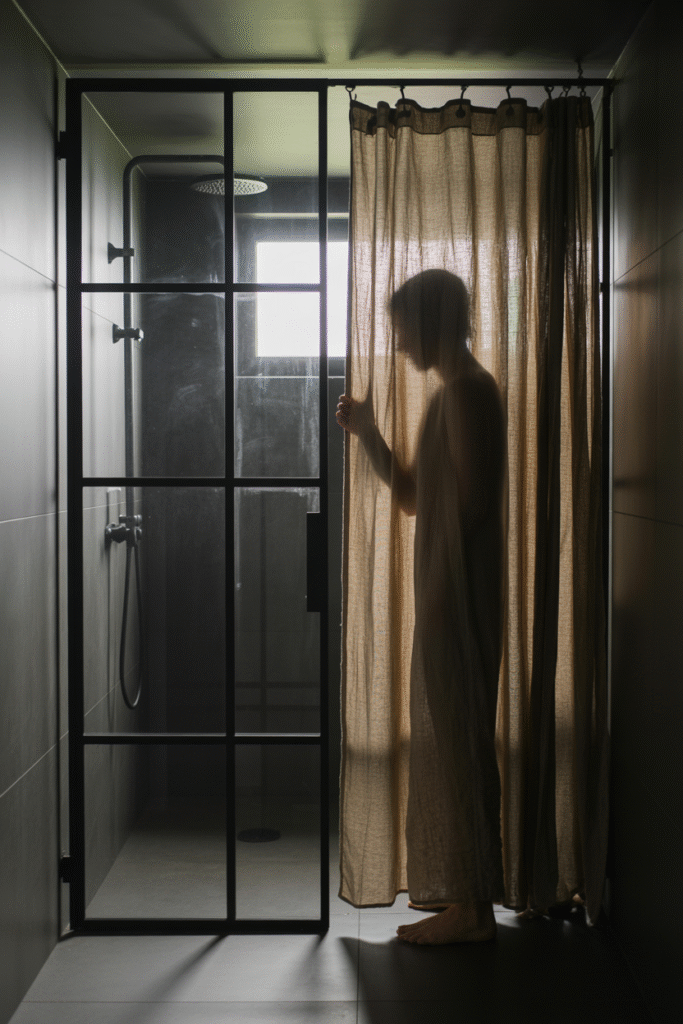
11. Glass Block Wall with Retro Curtain Styles
Glass block might feel dated to some, but it’s making a comeback in the right contexts. These translucent blocks provide privacy and light simultaneously, and they pair wonderfully with curtains that lean into retro or vintage vibes.
Think mid-century patterns, 1970s earth tones, or even art deco geometrics. The textured quality of glass block and the pattern of a vintage-inspired curtain create a layered, collected-over-time feeling that’s inherently cozy.
This combination works especially well in secondary bathrooms or guest baths where you want more personality and less perfection.
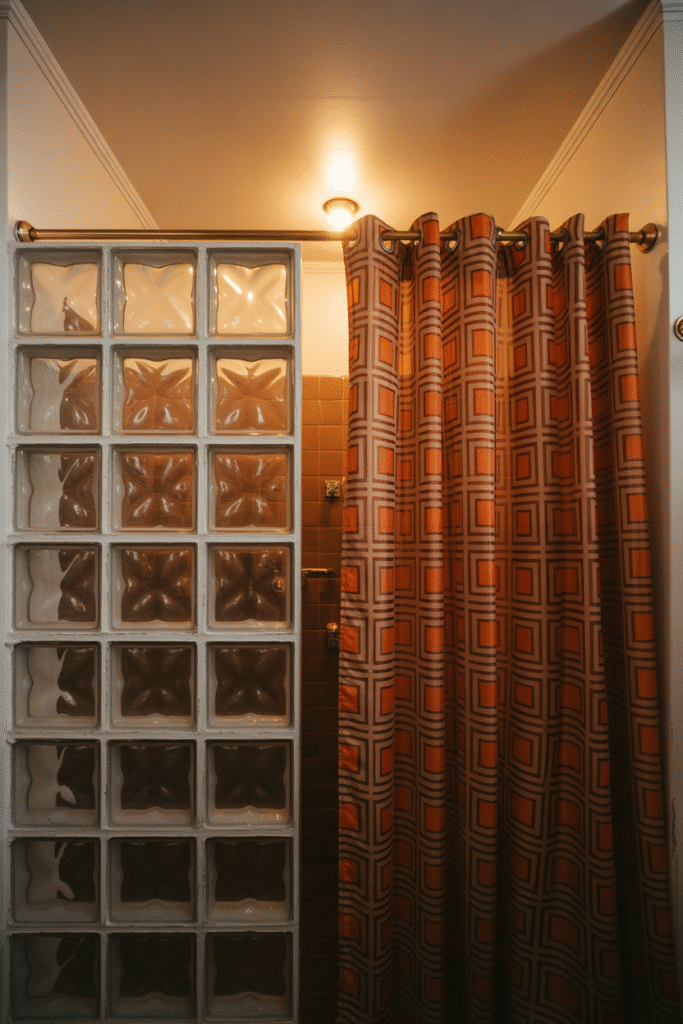
12. Partial Glass with Weighted Curtains for Spa Luxury
Here’s the ultimate in cozy luxury: partial glass walls (usually covering about 60-70% of the shower opening) combined with heavy, weighted curtains that puddle slightly on the floor.
The weight of the curtain—achieved through the fabric itself or with a weighted hem—creates that high-end hotel feeling. These curtains hang in perfect, heavy folds. They don’t billow or stick to you. They frame the shower opening like stage curtains.
Choose deep colors or rich textures: charcoal velvet, thick waffle weave in graphite, or even a washed linen in deep olive. The weight and richness of the fabric turns your daily shower into a sensory experience—you’re not just seeing luxury, you’re feeling it in the way the curtain moves and hangs.
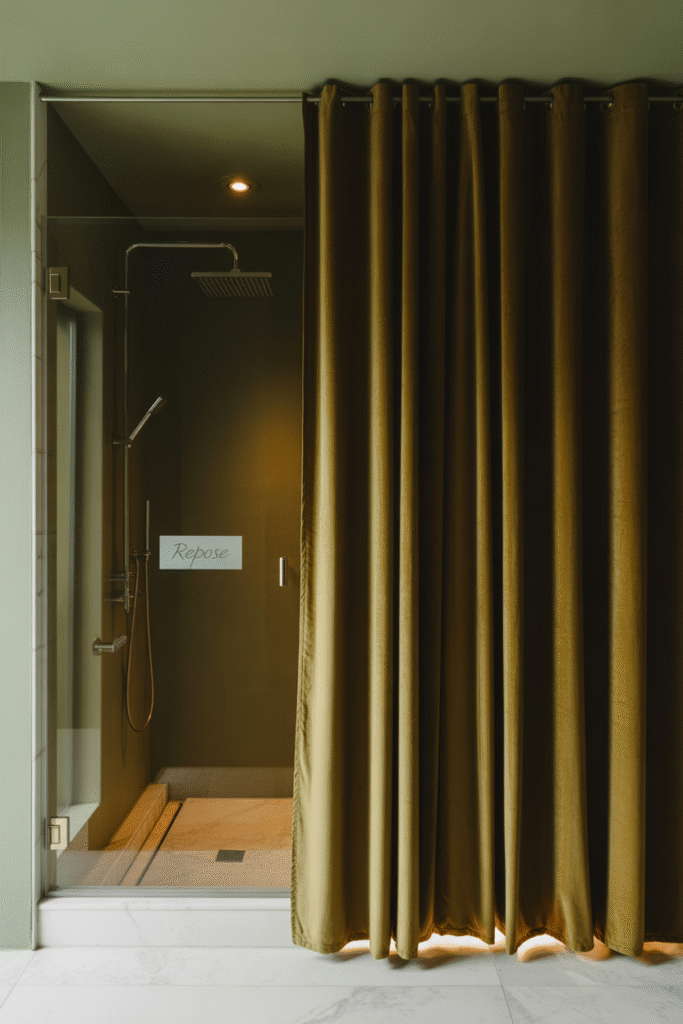
Making Your Choice Work in Your Space
Now that you’ve seen these options, here’s what actually matters when you’re making decisions for your own bathroom.
Start with your existing glass or your glass plan. If you’re renovating and haven’t installed anything yet, think about which combination speaks to you. If you already have glass installed, you’re looking at which curtain style will best complement what’s there.
Consider your actual needs beyond aesthetics. Do you share this bathroom? You might want more privacy options. Is steam and warmth important to you? Heavier curtains that can fully enclose the space might be essential. Do you have hard water or humidity issues? Some fabrics resist mildew better than others.
Budget realistically. The glass is your major investment—expect $800-$3,000 depending on size and type. But curtains offer flexibility here. You can start with an affordable cotton option and upgrade to that luxury linen later. Switch them seasonally. Test different colors before committing.
Hardware matters more than people think. Cheap curtain rods sag and look sad within months. Invest in quality rods, rings, and mounting hardware. Matte black, brushed brass, and polished chrome are all safe bets that won’t go out of style.
🚿 Find Your Perfect Style
Answer three quick questions to discover which glass shower & curtain combination suits your space
Your Next Steps
You don’t need to overthink this. Start by identifying which of these twelve styles resonates with your vision. Take a photo of your current bathroom and sketch (even roughly) how the combination might look.
Visit a fabric store and actually touch the materials. How heavy is that linen? Does the canvas feel right? Will you enjoy reaching for that curtain every day? These tactile decisions matter in a room where you start and end each day.
The best glass-and-curtain combination is the one that makes you happy every time you walk into your bathroom. It’s not about following trends perfectly—it’s about creating a space that feels both polished and personal, modern and comfortable, designed but not overdone.
That’s the sweet spot where good design lives. And that’s exactly what these glass-and-curtain combinations can give you.

